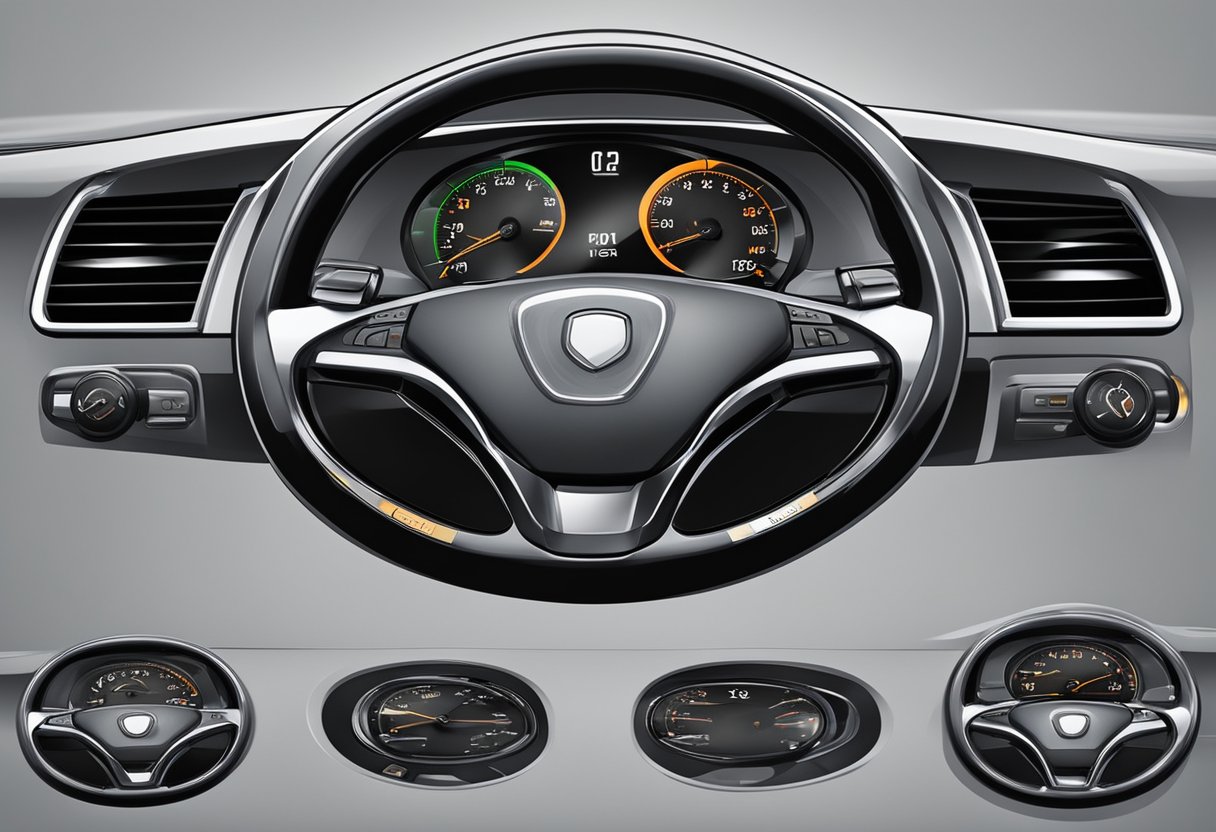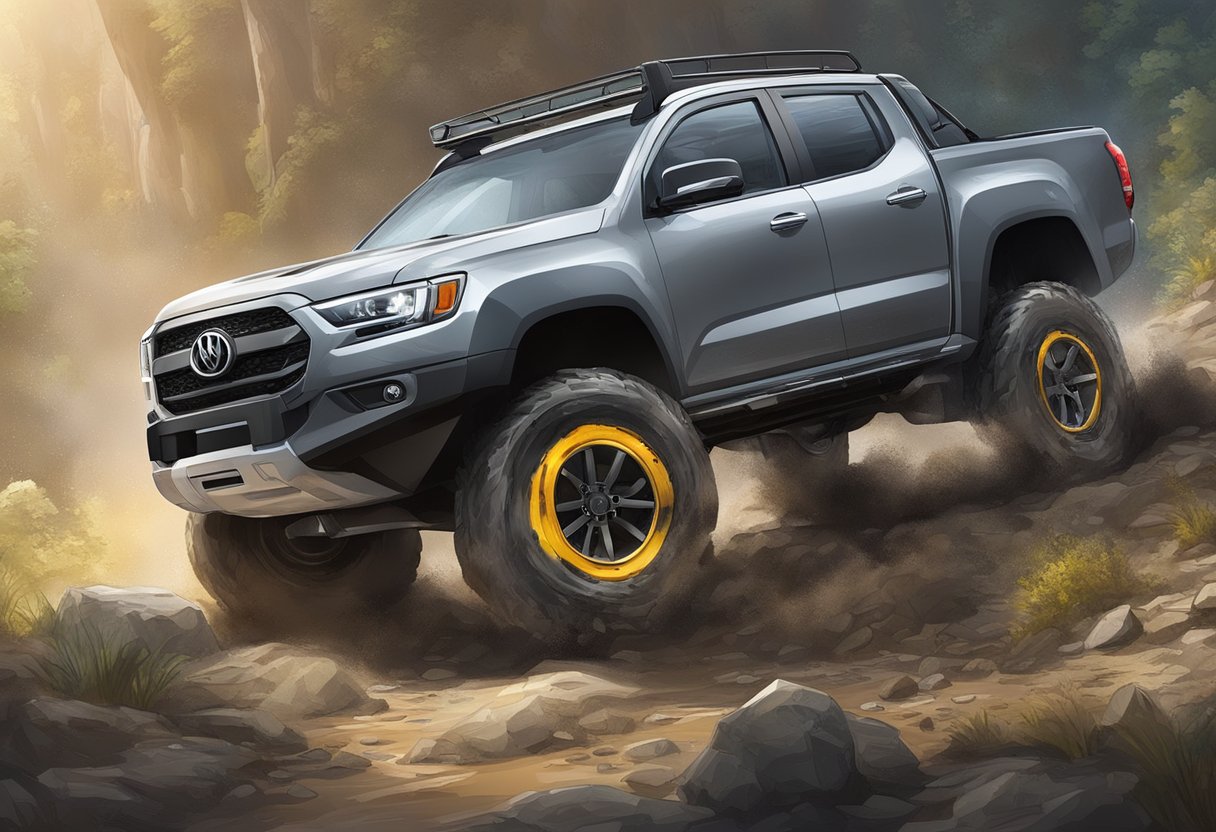If you live in an area with rough terrain or experience harsh weather conditions, you may have heard of the term AWD Lock. AWD stands for all-wheel drive, which is a drivetrain that powers all four wheels of a vehicle instead of just two. The AWD Lock feature is an added function that provides better traction and control in challenging driving conditions.
When you activate the AWD Lock feature, power is evenly distributed to all four wheels of your vehicle, improving its stability and safety. This feature is particularly useful when driving on rough and bumpy terrain or in slippery conditions such as snow or mud. The AWD Lock feature can be activated by pressing a button located in the middle of your vehicle’s dashboard.
In this article, we will explore what AWD Lock is, how it works, and when to use it. We will also provide a step-by-step guide on how to activate this feature in your vehicle. By the end of this article, you will have a better understanding of AWD Lock and how it can help you drive more safely and confidently on challenging roads.
Understanding AWD and AWD Lock
The Basics of All-Wheel Drive
All-wheel drive (AWD) is a drivetrain system that delivers power to all four wheels of a vehicle. This is different from a two-wheel drive system, which only powers two wheels. In an AWD system, power is distributed to all four wheels, which helps to improve traction, handling, and stability on different types of terrain.
AWD systems can be further divided into full-time and part-time systems. Full-time AWD systems deliver power to all four wheels all the time, while part-time systems only engage all four wheels when needed, such as when traction is lost.
What Is AWD Lock and How It Differs
AWD lock, also known as differential lock, is a feature found on some AWD vehicles that allows you to lock the front and rear differentials, which means that power is evenly distributed to all four wheels. This feature is useful when driving on rough terrain, such as mud, sand, or snow, where you need maximum traction.
When you engage the AWD lock, power is sent to all four wheels, regardless of whether they are slipping or not. This can help to improve traction and stability, especially when driving at low speeds. However, it is important to note that AWD lock should only be used in low-traction situations, as it can cause drivetrain binding and damage if used on dry pavement.
AWD lock differs from regular AWD in that regular AWD systems distribute power to all four wheels, but do not lock the differentials. This means that power is distributed based on traction, with more power going to the wheels with better traction. AWD lock, on the other hand, locks the differentials, which means that power is evenly distributed to all four wheels, regardless of traction.
In summary, AWD lock is a feature found on some AWD vehicles that allows you to lock the front and rear differentials, which means that power is evenly distributed to all four wheels. This feature is useful when driving on rough terrain, such as mud, sand, or snow, where you need maximum traction. However, it should only be used in low-traction situations, as it can cause drivetrain binding and damage if used on dry pavement.
Operational Mechanics of AWD Lock
Differentials and Torque Split
To understand the operational mechanics of AWD lock in vehicles, it is important to first understand how differentials and torque split work. Differentials are the mechanical devices that allow the wheels on the same axle to rotate at different speeds. Torque split, on the other hand, refers to the distribution of power between the front and rear wheels of a vehicle.
In an AWD vehicle, torque is usually split in a 50/50 ratio between the front and rear wheels. This means that each wheel receives an equal amount of power. However, in certain situations, such as when driving on slippery terrain, this distribution of power may not be enough to provide adequate traction. This is where the AWD lock mode comes into play.
AWD Lock Mode Engagement
The AWD lock mode is a feature that allows you to manually override the default torque split and force the vehicle to remain in full-time AWD mode. This means that power will be evenly split amongst all four wheels of your vehicle.
To engage the AWD lock mode, you need to press the AWD lock button, which is usually located on the dashboard or center console of your vehicle. Once engaged, an indicator light will illuminate on your dashboard to let you know that the AWD lock mode is active.
It is important to note that the AWD lock mode should only be used in situations where extra traction is needed, such as when driving on rough or slippery terrain. Using the AWD lock mode on dry pavement can cause unnecessary wear and tear on your vehicle’s drivetrain and reduce fuel efficiency.
In conclusion, the AWD lock mode is a useful feature that allows you to improve safety and control when driving on challenging terrain. By understanding the operational mechanics of AWD lock, you can use this feature effectively and avoid unnecessary wear and tear on your vehicle.
When and How to Use AWD Lock
If you own a vehicle with an all-wheel drive (AWD) system, you might have noticed a button labeled “AWD Lock” on the dashboard. This button is designed to provide additional traction and stability in certain driving conditions. In this section, we will discuss when and how to use the AWD Lock feature in your vehicle.
Optimal Conditions for AWD Lock
AWD Lock is most useful in low-traction situations such as snow, ice, mud, and other slippery terrain. If you find yourself stuck in mud or snow and your wheels are spinning, AWD Lock can help you get out by sending power to all four wheels instead of just two. This can also be useful when driving on steep hills or when towing a heavy load.
However, it is important to note that AWD Lock is not designed for use on dry pavement or high-traction surfaces. Using AWD Lock on these surfaces can cause unnecessary wear and tear on your vehicle’s drivetrain and tires.
Steps to Activate AWD Lock
Activating AWD Lock is a straightforward process. First, make sure your vehicle is in motion and traveling at a low speed. Then, locate the AWD Lock button on your dashboard and press it. This will engage the AWD Lock feature and send power to all four wheels.
It is important to note that AWD Lock is only designed to be used at low speeds. Once you have gained traction and are moving again, you should turn off the AWD Lock feature to avoid damaging your vehicle.
In conclusion, AWD Lock can be a useful feature in certain driving conditions, but it should only be used when necessary. By following the steps outlined above and using AWD Lock only in low-traction situations, you can help improve your vehicle’s stability and traction on slippery terrain.
What is the Definition and Usage of AWD Lock in Vehicles?
Unlocking a Chevy radio is relatively easy; just follow a few simple steps. AWD lock, on the other hand, refers to the feature in vehicles that allows the driver to lock all four wheels together for increased traction. This useful feature helps improve the vehicle’s performance in challenging terrains, providing better control and stability. It is essential for off-roading and driving on slippery surfaces.
Impact of AWD Lock on Vehicle Performance
When it comes to vehicle performance, the AWD lock feature can have a significant impact. Here are a few ways that AWD lock can affect your vehicle’s performance:
Handling and Control
One of the most significant benefits of using the AWD lock is that it can improve your vehicle’s handling and control. When you activate the AWD lock, power is evenly split amongst all four wheels, providing better traction and stability. This can be especially helpful in rough or slippery terrain, where maintaining control of your vehicle is crucial.
Tire Wear and Fuel Efficiency
While the AWD lock can improve your vehicle’s handling and control, it can also have an impact on your tires and fuel efficiency. When the AWD lock is engaged, all four wheels are working to provide power, which can put extra strain on your tires. This can lead to increased tire wear and potentially higher maintenance costs.
Also, because all four wheels are working to provide power, your vehicle may consume more fuel when the AWD lock is engaged. This is because the engine is working harder to provide power to all four wheels, which can lead to decreased fuel efficiency.
Overall, the AWD lock can be a useful feature for improving your vehicle’s performance in certain situations. However, it’s important to keep in mind that it can also have an impact on your vehicle’s tires and fuel efficiency. If you’re unsure whether or not to use the AWD lock, it’s best to consult your vehicle’s owner’s manual or speak with a trusted mechanic.
AWD Lock in Different Vehicle Models
Different automakers have their unique approach to AWD lock systems. Here are some examples of how innovative automakers have integrated AWD lock systems in their vehicles:
Toyota RAV4’s AWD Lock System
Toyota RAV4 is an SUV that has a reliable AWD lock system. The AWD lock button is located on the dashboard, and it can be used when driving at speeds of up to 25 mph. Once you engage the AWD lock system, the power is distributed evenly to all four wheels, which helps to improve traction and control in slippery conditions. The AWD lock system is useful in situations where you need to get out of the mud or drive on uneven terrain.
Nissan’s Approach to AWD Lock
Nissan also has an AWD lock system in some of its models. The AWD lock system is designed to help improve traction and control in slippery conditions. The system works by sending power to all four wheels, which helps to distribute the torque evenly. Nissan’s AWD lock system is reliable and can be used in situations where you need to drive on uneven terrain or get out of the mud.
Overall, the AWD lock system is an innovative technology that automakers have integrated into their vehicles. It is a reliable system that helps to improve traction and control in slippery conditions. If you are driving an SUV or a vehicle with an AWD lock system, it is essential to understand how to use it properly.
As an Amazon Associate we earn from qualifying purchases.















